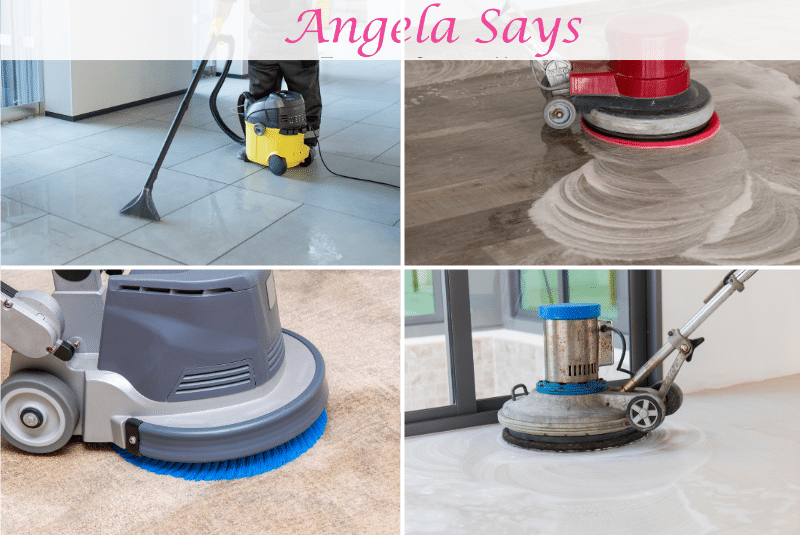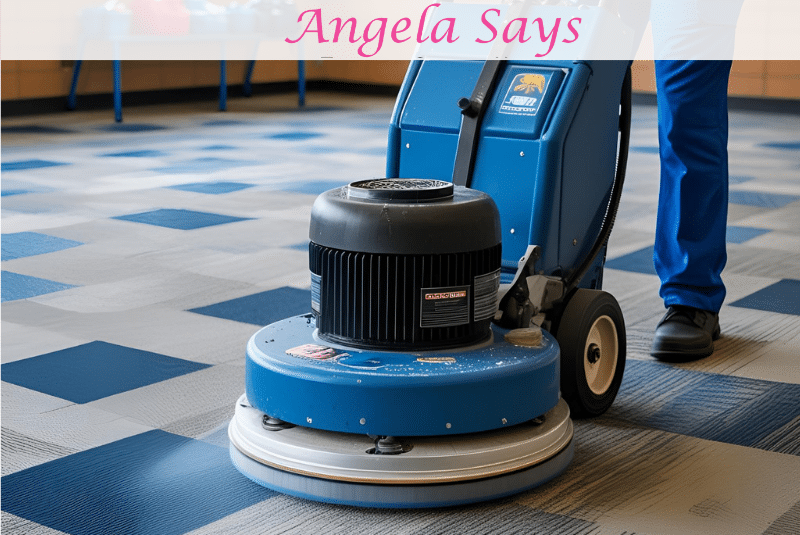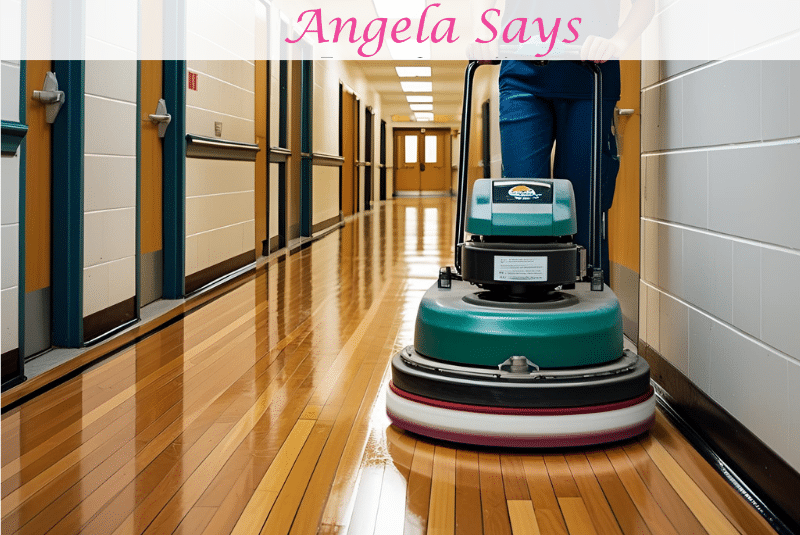Back-to-School Floor Cleaning Checklist: Carpet, Tile, Wood, and More

The back-to-school season marks a fresh start—not just for students and teachers, but also for the learning environment itself. After the long summer break, school floors often accumulate dust, allergens, and stains from maintenance work, summer programs, or simply being unused in certain areas. This makes the weeks leading up to the first day of school the perfect time for a deep and thorough floor cleaning.
A clean floor is more than just an aesthetic choice—it plays a direct role in student health, safety, and learning performance. Studies have shown that well-maintained school facilities, including floors, contribute to better air quality, reduced illness-related absences, and improved focus in the classroom.
Whether it’s the soft comfort of carpets in the library, the durability of tile in hallways, or the natural elegance of hardwood in multipurpose rooms, each flooring type requires a specific approach to cleaning and maintenance. Preparing them now ensures that students, faculty, and visitors start the academic year in a safe, welcoming, and hygienic environment.
In this guide, we’ll walk through a complete back-to-school floor cleaning checklist for carpet, tile, wood, and more—helping schools set the stage for a healthy and productive year ahead.
Importance of Floor Cleaning in Schools Before the Academic Year
Clean floors in schools do far more than enhance appearances—they directly influence student well-being, safety, and overall school performance. Before the academic year begins, dedicating time to deep floor cleaning ensures that every learning space is prepared for the influx of students and daily activity.
Key reasons why back-to-school floor cleaning is essential:
- Hygiene & Health Benefits
- Floors can harbor bacteria, allergens, and viruses that spread quickly in high-traffic areas.
- Deep cleaning removes dust mites, pollen, mold spores, and other airborne irritants that can affect indoor air quality.
- Reducing allergens helps students with asthma and allergies breathe easier and stay focused.
- Safety Precautions
- Built-up dirt or residue can create slippery surfaces, increasing the risk of falls.
- Loose tiles, frayed carpet edges, or warped wooden boards can be tripping hazards.
- Pre-year inspections and repairs prevent accidents before they happen.
- Aesthetic & Morale Boost
- A polished, spotless floor instantly makes a better impression on parents, visitors, and new students.
- Clean, well-maintained spaces can enhance the mood and productivity of both students and staff.
- Creates a welcoming environment that reflects the school’s commitment to care and quality.
By prioritizing floor cleaning before students return, schools can help reduce absenteeism, prevent costly damage, and foster a healthy learning atmosphere from day one.
Back-to-School Floor Cleaning Preparation Checklist

Before diving into the actual cleaning process, it’s important to prepare strategically. Proper planning ensures no area is overlooked and that cleaning is done efficiently without disrupting other back-to-school preparations.
Here’s a step-by-step preparation checklist for schools:
- Assess Floor Condition
- Walk through all classrooms, hallways, gyms, cafeterias, and offices to inspect floor surfaces.
- Look for stains, discoloration, water damage, mold, or worn spots that need targeted treatment.
- Identify high-traffic areas, such as main entrances and hallways, that will require extra attention.
- Gather Cleaning Supplies & Equipment
- Choose non-toxic, child-safe cleaning products that meet health and safety guidelines.
- Stock microfiber mops, HEPA-filter vacuums, scrub brushes, disinfectant solutions, and floor buffers.
- Ensure all equipment is in good working order to prevent delays.
- Create a Cleaning Schedule
- Assign tasks to staff or coordinate with a professional cleaning service.
- Plan for a deep cleaning well before the first day of school to allow for sufficient drying and ventilation time.
- Schedule ongoing maintenance for the semester to keep floors in optimal condition.
- Prepare for Specialized Care
- Certain floors, such as gym hardwood or delicate tile, may require specialized cleaning techniques.
- Arrange for expert services as needed to prevent damage and extend the life of your flooring.
With a clear plan, the actual cleaning process becomes faster, more effective, and less disruptive—allowing schools to start the academic year with pristine, well-maintained floors.
Carpet Cleaning Checklist for Schools

School carpets—whether in libraries, classrooms, or administrative offices—can trap dust, allergens, and odors more than any other flooring type. With students spending hours each day in these spaces, it’s essential to give carpets a deep, thorough clean before the academic year begins.
Here’s a back-to-school carpet cleaning checklist:
- Deep Vacuuming
- Use a HEPA-filter vacuum to capture fine dust, allergens, and particles that regular vacuums miss.
- Vacuum slowly and in multiple directions to lift embedded dirt.
- Focus on corners, under furniture, and high-traffic zones.
- Spot & Stain Removal
- Treat problem areas caused by summer spills, ink marks, or tracked-in mud.
- Use carpet-safe, non-toxic stain removers to avoid damaging fibers or leaving residue.
- Deep Cleaning Method Selection
- Hot Water Extraction – Ideal for heavily soiled areas; removes deep-seated dirt and bacteria.
- Low-Moisture Cleaning – Faster drying time; reduces mold and mildew risks in humid climates.
- Select the method based on the carpet material, drying time, and room usage.
- Deodorizing & Sanitizing
- Apply eco-friendly deodorizers to eliminate musty odors caused by summer humidity.
- Use sanitizing solutions approved for use in school environments to reduce the spread of germs.
- Drying & Ventilation
- Ensure carpets are fully dry before students return to prevent mold growth.
- Use fans or dehumidifiers to speed up drying time.
A well-maintained carpet not only looks cleaner but also improves indoor air quality, making classrooms healthier and more inviting for students and staff.
Tile & Grout Cleaning Checklist

Tile floors are a popular choice in schools due to their durability and ease of maintenance, particularly in hallways, restrooms, cafeterias, and science labs. However, over time, dirt and grime can accumulate—especially in the grout lines—making floors appear dull and unhygienic. A thorough back-to-school tile and grout cleaning ensures a safe, polished, and bacteria-free surface.
Here’s the essential checklist for school tile floors:
- Sweeping & Debris Removal
- Begin by sweeping or vacuuming to remove dust, sand, and debris that can scratch tile surfaces.
- Pay extra attention to corners and baseboards where dirt tends to collect.
- Deep Mopping with pH-Neutral Cleaners
- Use a pH-neutral floor cleaner to protect tile finish and avoid chemical damage.
- Mop systematically, starting from one end of the room and working toward the exit.
- Change mop water frequently to avoid redistributing dirt.
- Grout Scrubbing & Disinfecting
- Scrub grout lines with a stiff brush to remove embedded dirt, mold, and mildew.
- Use a school-safe disinfectant to kill bacteria, especially in restroom and cafeteria areas.
- Stain Treatment
- Apply targeted cleaners to remove tough stains, such as food spills, ink, or rust marks.
- Sealing Grout Lines
- Once clean and dry, apply a grout sealant to prevent future staining and make cleaning easier.
- Sealant also helps block moisture, reducing the risk of mold growth.
With this approach, tile floors not only look brighter and cleaner but also stay more resistant to daily wear throughout the school year.
Wood Floor Cleaning Checklist

Wood floors, often found in school gyms, auditoriums, and some classrooms, add a warm, polished look to the learning environment. However, they require careful maintenance to preserve their finish, prevent warping, and ensure the safety of students and staff. Improper cleaning—especially with excessive water—can cause costly, long-term damage.
Here’s a back-to-school wood floor cleaning checklist:
- Daily Dusting & Sweeping
- Use a microfiber dust mop to collect dust, sand, and grit without scratching the surface.
- Sweep in the direction of the wood grain to minimize residue.
- Gentle Cleaning Solutions
- Choose cleaners specifically formulated for hardwood floors—avoid harsh chemicals or vinegar-based solutions, as these can dull the finish.
- Dampen (not soak) the mop to prevent moisture from penetrating the wood.
- Buffing & Polishing
- Buff floors with a soft pad to restore natural shine and remove light scuff marks.
- Apply a school-safe polish or protective finish to enhance durability.
- Inspect for Damage
- Check for scratches, chips, or splintering and schedule repairs before sealing.
- Address any signs of water damage or warping immediately to prevent spreading.
- Recoating if Needed
- For heavily used gym floors, consider recoating with a protective layer before the start of the school year to improve traction and extend the lifespan.
A properly cleaned and maintained wood floor not only looks impressive but also provides a safe, slip-resistant surface that can withstand the demands of a busy school year.
Additional Floor Types & Special Areas
While carpet, tile, and wood are the most common flooring types in schools, other specialized surfaces also need attention before the academic year begins. These areas often require different cleaning techniques and products to maintain their durability, safety, and appearance.
Key additional floor types and special areas to include in your back-to-school cleaning plan:
- Vinyl or Laminate Floors
- Sweep or vacuum to remove dust and grit that can scratch the surface.
- Use mild, non-abrasive cleaners and avoid excessive water to prevent warping.
- Apply a protective finish, as recommended by the manufacturer, to prolong the lifespan.
- Gymnasium Floors
- Follow sport-specific cleaning protocols to maintain performance and traction.
- Dust mop daily to remove dirt and prevent scratches.
- Schedule deep cleaning and recoating if the floor is used heavily for sports or events.
- Cafeteria & Kitchen Areas
- Focus on grease removal, especially in kitchen prep areas.
- Disinfect floors to prevent the spread of foodborne bacteria.
- Apply slip-resistant treatments to improve safety in high-spill zones.
- Science Labs & Art Rooms
- Remove chemical residues or paint splatters using appropriate, non-damaging solutions.
- Disinfect to ensure surfaces are free from harmful contaminants.
By addressing these specialized areas along with main flooring types, schools can ensure a comprehensive clean that covers every learning and activity space before students return.
Preventive Measures for Floor Maintenance During the School Year
A deep cleaning before students return sets the stage for a fresh academic start—but maintaining that cleanliness requires consistent care throughout the year. Preventive measures not only keep floors looking good but also extend their lifespan, saving schools from costly replacements or repairs.
Practical steps to preserve school floors during the year:
- Install Entryway Mats
- Place heavy-duty mats at all main entrances to trap dirt, moisture, and debris before it reaches the floors.
- Clean and replace mats regularly to ensure effectiveness.
- Create a Regular Cleaning Schedule
- Assign daily sweeping or vacuuming for high-traffic areas such as hallways and cafeterias.
- Schedule weekly or bi-weekly deep cleaning for problem areas.
- Immediate Spill Clean-Ups
- Train staff and students to report spills immediately.
- Keep spill kits accessible in classrooms, cafeterias, and gym areas.
- Protect High-Traffic Zones
- Use floor runners or protective mats in areas like corridors, library entrances, and near water fountains.
- Student & Staff Awareness
- Encourage a “clean as you go” culture to reduce mess.
- Provide reminders about removing muddy shoes or wiping feet before entering classrooms.
When schools adopt these preventive strategies, they minimize daily wear and tear, maintaining a healthier environment for students and staff throughout the year.
Professional vs. In-House Floor Cleaning
While in-house custodial teams play a vital role in daily upkeep, some floor cleaning tasks—especially those needed before the start of a school year—are best handled by professionals. Knowing when to rely on your staff and when to bring in expert help can make a significant difference in results, efficiency, and long-term floor care.
When to Choose Professional Cleaning Services
- Large-Scale Deep Cleaning – Professionals have the necessary equipment and manpower to handle extensive areas quickly, ensuring all floors are ready for classes to start.
- Specialized Floor Types – Delicate hardwood, natural stone, or certain commercial-grade carpets require specific cleaning methods that reduce the risk of damage.
- Stubborn Stains & Odors – Experts use advanced cleaning agents and techniques to remove what regular cleaning can’t.
- Restoration Services – From buffing wood floors to resealing grout, professional care can significantly extend the life of your flooring.
Benefits of Hiring Professional Services
- Faster turnaround with minimal disruption to school operations.
- Access to industrial-grade cleaning machines for a deeper, more thorough clean.
- Longer-lasting floors and reduced repair or replacement costs.
- Enhanced indoor air quality through high-powered dust and allergen removal.
When In-House Cleaning Works Best
- Daily sweeping, vacuuming, and Mopping.
- Routine spill clean-ups and minor stain removal.
- Regular dusting of high-touch and high-traffic areas.
For most schools, the ideal approach is a hybrid cleaning plan—routine in-house maintenance supplemented by scheduled professional deep cleaning to keep floors in top condition year-round.
Conclusion – A Fresh Start for a Successful School Year
Starting the academic year with clean, well-maintained floors sets the tone for a healthy, safe, and welcoming learning environment. From the plush carpets in the library to the durable tiles in hallways and the polished wood floors in the gym, every surface plays a role in creating a space where students and staff can thrive.
By following a comprehensive back-to-school floor cleaning checklist—covering carpets, tile, wood, and specialized flooring—schools can:
- Improve indoor air quality.
- Reduce the spread of germs and allergens.
- Prevent slips, trips, and long-term floor damage.
- Present a polished, professional image to students, parents, and visitors.
Whether handled in-house or with the help of professional cleaning services, this preparation ensures that floors can withstand the daily hustle of the school year while remaining attractive and safe.
Clean floors aren’t just about appearance—they’re about fostering a positive, healthy learning atmosphere from day one. A small investment in deep cleaning now can pay off in fewer repairs, better health outcomes, and an overall brighter start to the school year.
Frequently Asked Questions
1. Why is back-to-school floor cleaning important for schools?
Back-to-school floor cleaning ensures a safe, healthy, and welcoming environment for students and staff. It removes dirt, allergens, and bacteria that build up over the summer, helps improve indoor air quality, prevents slips and trips, and creates a positive first impression for parents and visitors.
2. How often should school floors be professionally cleaned?
Daily maintenance can be handled in-house, but professional deep cleaning should be scheduled at least twice a year—once before the start of the school year and once during mid-year breaks. High-traffic areas such as hallways and cafeterias may benefit from quarterly deep cleaning.
3. What cleaning methods are safest for school environments?
Eco-friendly, non-toxic cleaning products are best for school settings. Safe methods include low-moisture carpet cleaning, pH-neutral tile cleaning, and gentle hardwood maintenance. Professional cleaners often use HEPA vacuums to trap fine dust and allergens, preventing them from being spread.
4. Should schools clean all types of floors before the school year starts?
Yes. All flooring—including carpets, tiles, and hardwood—should be cleaned before students return. Each material requires a different approach to ensure safety, hygiene, and durability. Special areas, such as cafeterias, kitchens, and science labs, also require targeted cleaning.
5. What are the benefits of hiring a professional floor cleaning service for schools?
Professional cleaners deliver deeper, longer-lasting results with specialized equipment and safe cleaning products. They save time for school staff, reduce long-term maintenance costs, and help create a healthier environment for everyone on campus.
